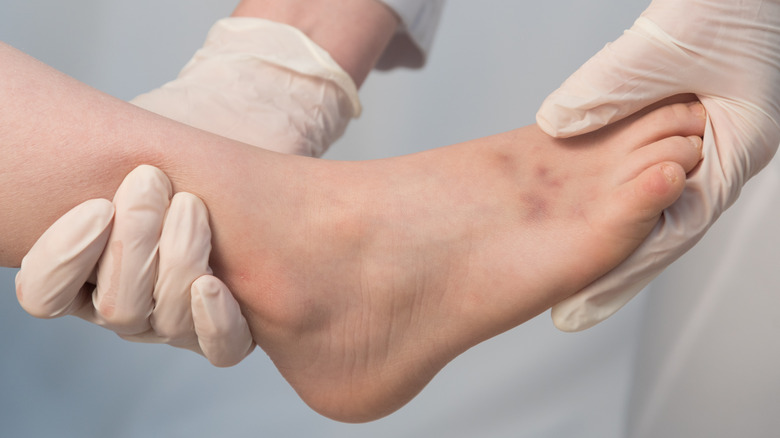What The Color Of Your Bruise Could Really Mean
Whether you tripped walking in the street or got hit playing a sport, getting bruises at some point is inevitable. Bruises can range from tiny dots to large, swollen areas. Most don't require medical attention because they minor injuries that the body can heal on its own, according to Medical News Today. However, some bruises continue hurting a lot even days past the original injury. In those cases, you should seek medical attention.
From the very moment you get hurt, the body starts repairing itself, and the color of the bruise provides clues about the stage of the recovery process. When you first get a bruise, it will usually have a red or purple tonality (via Nemours Kids Health). This is because the impact of the injury caused blood vessels in that area to break and release blood. If there is no cut to release the blood, it just pools underneath your skin, sometimes causing swelling (via WebMD).
It's normal if your bruises changes color throughout the healing process
One or two days after a bruise initially forms, the blood populating the bruise loses its oxygen and in turn, the bruise will have a blue or blackish color (via Medical News Today). In the next three to eight days, the body will try to get rid of the blood under the bruise by breaking it down into smaller particles (via WebMD). The body breaks down hemoglobin, producing biliverdin and bilirubin in the process. Biliverdin has a green coloration while bilirubin is yellow, and they are responsible for the greenish/yellowish tint of your bruise.
Between 10 to 14 days after the incident, the bruise should look brownish, and then it will start looking lighter and lighter until it disappears. This means that the typical healing time for a bruise is two weeks. You can opt to let your body do the healing on its own, or apply a cold compress to reduce swelling and speed up the healing process.


